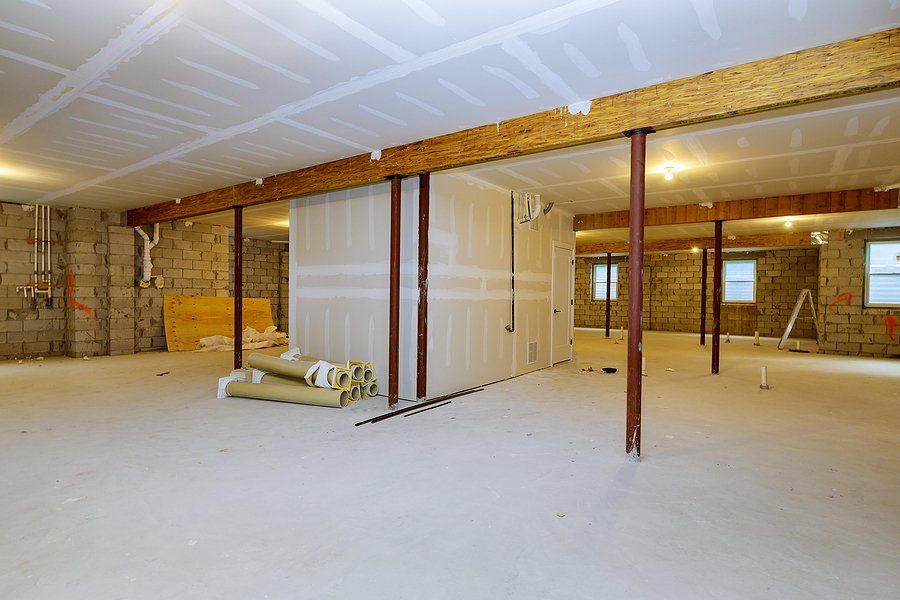Crawl Space Repair Levittown, PA

Common Crawl Space Problem Signs
Crawl spaces can show several warning signs that indicate underlying issues. One of the most common problems is high moisture levels, often leading to mold growth, wood rot, and a musty smell that can seep into the rest of the home. Visible water stains or standing water may suggest inadequate drainage, while sagging floors or cracks in the foundation could be due to excessive moisture. In these situations, installing a moisture barrier for crawl space or a crawl space vapor barrier can prevent further damage by controlling humidity levels.
Other issues to watch for include pest infestations and cold floors above the crawl space, which are signs that your crawl space insulation may be compromised. All of these symptoms can be addressed by reinforcing the space with a vapor barrier or undergoing crawl space encapsulation to fully seal the area from external moisture.
Causes of Crawl Space Issues
Several factors can lead to crawl space problems, but moisture is the primary culprit. Poor ventilation, flooding, and leaks can increase humidity levels, which often result in mold, structural damage, and poor air quality. A lack of proper drainage around the foundation can exacerbate this issue, causing standing water and increased pressure on the foundation walls. In these cases, a moisture barrier or a vapor seal crawl space solution is crucial to mitigating damage.
Inadequate or deteriorated insulation can also be a cause, as it allows cold air to enter the crawl space, making it difficult to maintain a consistent temperature in your home. Applying crawl space insulation or adding a basement vapor barrier will help improve energy efficiency and reduce moisture-related issues.
Methods of Fixing Crawl Space Problems
Several methods can be employed to fix crawl space issues. The most effective solution is crawl space encapsulation, which involves sealing the area with a high-quality vapor barrier. This not only prevents moisture from entering but also improves air quality and energy efficiency. Additionally, adding a moisture barrier for crawl space helps protect against water seepage and reduces the risk of mold and rot.
For more severe moisture problems, installing a crawl space vapor barrier with a vapor seal crawl space system can offer long-term protection. This process involves sealing the floors and walls of the crawl space, effectively creating a dry, controlled environment that prevents moisture from penetrating. Lastly, insulating the area with proper crawl space insulation ensures that your home stays warm in the winter and cool in the summer, while also preventing future damage from excess moisture.
Effective Crawl Space Moisture Barriers
A Crawl Space Moisture Barrier Levittown, PA is an effective method of preventing mold and mildew from entering your crawl space. This is basically the outer barrier that effectively prohibits moisture from entering the crawl space, thereby lowering your house's indoor air quality. The moisture barrier is usually a thin plastic membrane or barrier paper that effectively keeps moisture from penetrating the crawl space. It is made from a resilient material such as expanded polystyrene foam.
There are a number of reasons why you should use a crawl space moisture barrier. If mold spores are present in your house, then you have an even bigger problem on your hands. Also, if you live in a humid area, it's quite likely that your house will be filled with spores, thus making the elimination of mold and mildew even more challenging. A perimeter drain would definitely be a good idea to prevent excess moisture from getting into your space.

Contact Us
Always Check for Mold and Mildew
It is a good idea to check for the presence of mold and mildew in your crawl space before starting the process of eliminating them. Mold and mildew growth often results from condensation between the soil and the insulated floorboard. By sealing off this moisture, you can prevent this environment from developing.
Check if your ventilation is Leaking
You may also want to consider the possibility that your ventilation system may be leaking. In this case, you should get a crawl space moisture barrier to put over the wall and around the ventilation pipes. In addition to doing this, you should also repair any insulation on your walls. If you cannot afford to do so, then at least ensure that the insulation is not leaking.
Make use of Plastic Materials
You may find it beneficial to use plastic material for your crawl space repair and moisture barrier. However, you have to make sure that the plastic material used is very resistant to moisture. Plastic material tends to break down very quickly. If the plastic gets too wet, then it will easily become rotten. In addition, the plastic material can be easily punctured.
You have to realize that the moisture vapor barrier is only one among many effective solutions for controlling the growth of mold and mildew in a crawl space. You also need to maintain a safe environment for your family by eliminating all possible sources of water entry such as broken or cracked foundation walls. If you want your space to be mold-free, then you need to seal the space from outside moisture.
How do you fix your foundation and waterproof it?
One way of doing this is to fix the foundation and waterproof the walls properly. If you cannot do this on your own, then you should consider hiring a professional to do this for you. When choosing a contractor for your crawl space moisture barrier project, make sure he or she is licensed and certified to perform the job. He or she should also be knowledgeable about the materials and equipment used for the job. It would be a good idea to check his or her credentials with the Better Business Bureau. You can also ask your friends and family for recommendations.
Your contractor will probably recommend using an underlayment or a vapor barrier between the floor and walls. These products are usually applied to provide additional insulation to reduce the amount of heat loss through the walls. With this extra layer of insulation, you can reduce the chances of mold and mildew growing in your crawl space that can make your home and your family's health unhealthy.
What is a Water Reclamation System?
Another product that can be used in addition to vapor barriers is a water reclamation system. Water reclamation systems remove excess moisture from your home by reusing, cleaning out, and diverting rainwater runoff into specially designed catch basins. The catch basin is filled with dehumidified water that the ground absorbs. This water, along with any salt, minerals, and bacteria that may have accumulated in the soil under your house, is removed before they cause damage to your basement walls, floor, or foundation.
Crawl space heat vents can also be installed to provide additional insulation between your foundation walls and floor and walls. Heating ducts are not always needed, as crawl space temperatures rarely exceed 55 degrees during the winter. However, this type of ventilation is more expensive than other types of ventilation. In addition to costing more money, however, warm vents emit toxic fumes into the atmosphere. If your heating ducts are not vented to the outside of the home, they may not be an option.
A combination of sealants, waterproofing, and air ducts will keep water entry to your crawl space to a minimum. They will also help keep your foundation walls, floor, and wall framing dry. By improving your foundation, you will keep water entry to your space to a minimum, which will help eliminate potential problems like mold and mildew.
Using an effective crawl space moisture barrier is key to preventing mold and mildew growth, protecting both your home's structure and indoor air quality. These barriers, typically made from resilient materials like plastic or foam, act as a shield to keep moisture from entering your crawl space. It's important to regularly check for mold, repair any leaking insulation or ventilation, and ensure proper sealing to maintain a dry environment. Additionally, incorporating waterproofing techniques like perimeter drains and water reclamation systems can further reduce moisture buildup and protect your foundation.
For expert advice on moisture barriers and crawl space waterproofing,
contact us today. Be sure to explore
our blog for more insights on maintaining a healthy home.
What is a moisture barrier for crawl space?
A moisture barrier is a protective layer applied to the floor and sometimes walls of your crawl space to prevent moisture from entering and causing issues like mold, rot, or structural damage.
Why should I install a crawl space vapor barrier?
Installing a crawl space vapor barrier helps control humidity, reduces mold growth, and improves the overall air quality in your home by keeping moisture out of the crawl space.
What is crawl space encapsulation?
Crawl space encapsulation involves sealing off the entire crawl space area with a vapor barrier, ensuring that moisture, pests, and cold air are kept out, protecting the integrity of your home’s foundation.
How does crawl space insulation help?
Crawl space insulation prevents heat loss, reduces energy costs, and helps maintain a stable temperature in your home while preventing moisture-related issues like mold and rot.
Is a vapor seal crawl space necessary?
A vapor seal crawl space is essential if you want to fully protect your home from moisture intrusion, improve energy efficiency, and maintain a dry, healthy living environment.

